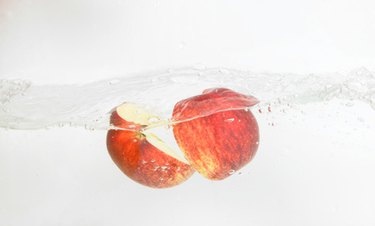Things You'll Need
Ascorbic acid (vitamin C)
Pot
Distilled water

Fresh fruits such as apples, peaches and pears are a healthy snack but they quickly start to turn brown when they are sliced and left out in the open. Known as enzymatic browning, this reaction occurs when fruits that contain an enzyme called polyphenol oxidase are exposed to oxygen. Although it is impossible to prevent fruits from turning brown, different methods can be used to maintain their freshness and minimize browning. One of those methods involves properly applying ascorbic acid to the fruit.
Step 1
Choose an ascorbic acid -- vitamin C. It comes in different forms including powder and tablets you may purchase at a pharmacy. Mixtures are available that contain ascorbic acid along with other ingredients such as sugar and citric acid. Purchase these mixtures at the grocery store or where canning products are sold. Although all the different forms of ascorbic acid have the same effect on fruits, ascorbic acid in powder or mixture form makes for easier application.
Video of the Day
Step 2
Prepare the ascorbic acid. For several pounds of fruit, use a large pot and combine 1 tsp. ascorbic acid (powder or crushed tablets) with 1 gallon distilled water. You may need to use several tablespoons of the store-bought mixture depending on the amount of fruit you are preparing and the manufacturer's instructions. Mix 1/2 tsp. ascorbic acid with 3 tbsp. water for a small bowl of fruit .
Step 3
Apply ascorbic acid to fruit. Wash and slice the fruit before placing it in the ascorbic acid. Let the fruit soak for a few minutes before freezing, canning or using it. If you have a smaller amount of the ascorbic solution, simply spoon it over fruit after slicing it.
Video of the Day